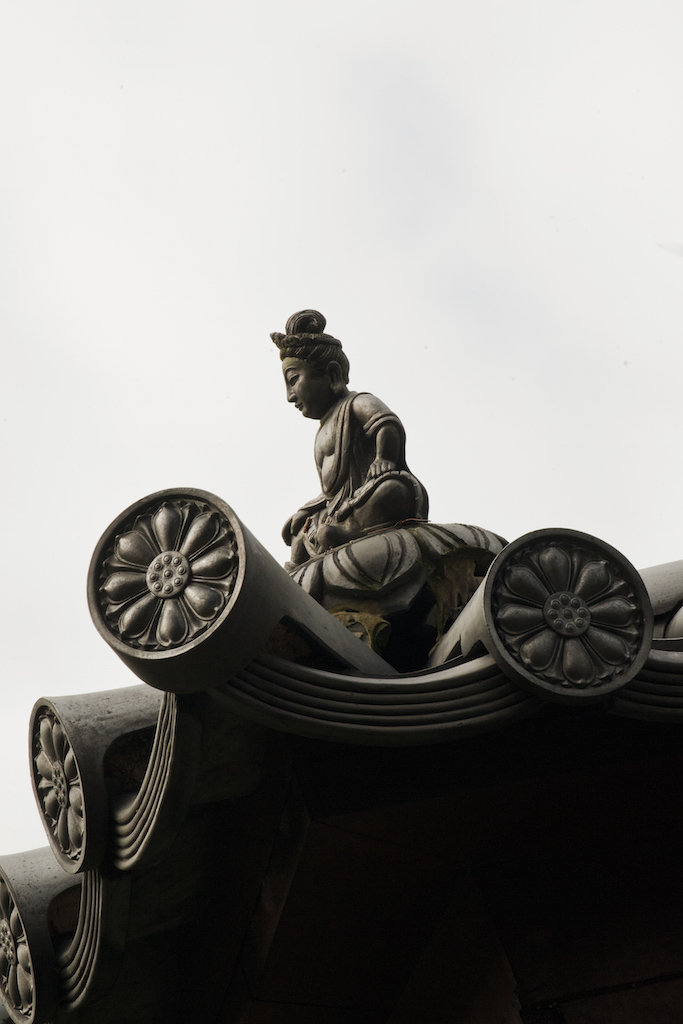
The Two Other Kinds of Perseverance
It is joyful to read the books written by Master Shandao, the de facto founder of Pure Land Buddhism, because he repeatedly emphasizes that Pure Land teachings are tailor-made for the iniquitous sentient beings in the Six Realms, that is, ordinary beings like us, rather than being for those on the sacred paths (namely, Buddhas, bodhisattvas, pratyekabuddhas, and arhats). He continuously gives us faith and hope of rebirth in the Land of Bliss, so that we can end the sufferings caused by birth and death.
Speaking from the perspective of Amitabha Buddha, Master Shandao encourages us to dedicate all our previous virtuous practices (self-power) and aspire to be reborn in the Land of Bliss through exclusive Amitabha-recitation (other-power). In this respect, our rebirth is assured by Amitabha Buddha in accordance with his Fundamental Vow.

Upon hearing the teachings of pristine Pure Land Buddhism, we are likely to feel a kind of excitement and joy, like the “perseverance in joy” attained by Queen Vaidehi in the Contemplation Sutra, as discussed in detail in my last article.*
In the Commentary on the Contemplation Sutra, Master Shandao also points out that, apart from joy, two other kinds of perseverance arise after hearing the teachings of pristine Pure Land Buddhism: enlightenment and faith. They are basically the same; they are just other names to express the joy.
Perseverance in Enlightenment
How did Queen Vaidehi become enlightened? Shakyamuni Buddha emitted rays of light from between his eyebrows to the innumerable worlds in the ten directions, and when they returned, images of the Land of Bliss and Amitabha Buddha manifested above his head; seeing this, Queen Vaidehi immediately realized the true existence of the Land of Bliss. It is pure and real, unlike the defiled and unreal Saha World, which we inhabit at the moment.
Ordinary beings can recognize the existence of something only by comparing and contrasting it with other things. For instance, if there was only one “color” in this world, “color” would be meaningless. It would not make sense to ask what “color” something was. You could arbitrarily call it “blue” or “red,” but that is only meaningful to those who recognize a difference in “color,” not to those living in a monochrome world.
Most Buddhists know that all worldly matters and phenomena are unreal, impermanent, and empty in nature. The arising and extinction of all dharmas in our world are subject to causal conditions. At the same time, we are also told that there exists “something” which is real and unconditioned, often called Dharma Nature, True Suchness, Real Mark, Unconditioned Dharma, Prajna, Nirvana, and so on. Owing to the heavy obscuration of karma, we cannot visualize what this “something” looks like or realize what it is—this abstract idea cannot be expressed through human language, being beyond the imagination of our discriminative consciousness. Apart from believing the words of the Buddha, there is no way for ordinary beings to understand what the unconditioned realm of nirvana is.
In the Contemplation Sutra, Shakyamuni Buddha tells us that the Land of Bliss is none other than the unconditioned realm of nirvana. Visualizing the “real” existence of the Pure Land, Queen Vaidehi realized all worldly dharmas to be “unreal.” She was free of attachments, joyful about letting go of the defiled world, and unhesitant to leave the Saha World. She attained the perseverance in enlightenment when she visualized the Land of Bliss and Amitabha Buddha.
Perseverance in Faith
Visualizing the Land of Bliss and Amitabha Buddha for herself, Queen Vaidehi witnessed and believed in its existence with no further doubt, thus becoming more confident in the aspiration for rebirth in the Land of Bliss. Many Buddhists doubt the “real” existence of the Land of Bliss and Amitabha Buddha, and some may need proof or evidence before they believe in it and can aspire to be reborn there. Unfortunately, due to the heavy obscuration of karma, ordinary beings cannot realize the splendid and pure nature of the Land of Bliss by themselves.
Amitabha Buddha is the Buddha of the other world, the Land of Bliss, which is entirely different in nature from our world, the Saha World. Shakyamuni Buddha achieved Buddhahood in this defiled land and appears in the form of a Transformation Body, or nirmanakaya, which can be seen by us. Unlike Shakyamuni Buddha, Amitabha Buddha achieved Buddhahood in the Reward Land, so he is in the form of a Reward Body, or sambhogakaya, which cannot be visualized with the human eye.
It is sometimes difficult for an ordinary being to believe in his existence, although Amitabha Buddha vows to unconditionally deliver us to and receive us in the Land of Bliss. Visions of Amitabha Buddha in any form and under any circumstances are possible only because he wishes us to have them, not because of any achievement in our meditative practices.
As the Land of Bliss is the homeland of Amitabha Buddha, iniquitous ordinary beings may doubt whether they are “qualified” to be born there. However, Shakyamuni Buddha assures Queen Vaidehi and ordinary beings of rebirth in the Land of Bliss in the next life. Queen Vaidehi was extremely excited and joyful, and had deep faith in Amitabha’s deliverance. When she visualized the Land of Bliss and Amitabha Buddha, she attained a kind of perseverance in faith.
Waking Up from a Dream
If one can experience a vision of the Land of Bliss, one can certainly be born in the Pure Land in the next life. Shakyamuni Buddha said in the Contemplation Sutra that the Third Contemplation (Contemplation of the Ground) is the general perception of the ground of the Land of Bliss. He further said, “If one has attained a vision of the ground of that land, the negative karma which one has accumulated during eighty kotis of kalpas of Samsara will be extinguished, and so one will certainly be born in the Pure Land in the next life. Do not doubt this.”**
By seeing the image of the Land of Bliss, Queen Vaidehi understood the “empty” nature of our defiled Saha World, such as the impermanence of all phenomena, dependent origination, and the causal condition of all dharmas. She detached from the delusive views and illusive afflictions of the Saha World and aspired to be born in the Land of Bliss. This is similar to a person who wakes up suddenly and realizes his dreams are not real—both nightmares and sweet dreams are illusive. There is an ancient Chinese verse that explains: “When death comes, we know we are beings in a dream.” That is why all “delusive” karma will be extinguished when one is awakened in the “real” Land of Bliss.
* Perseverance of Joy upon Hearing of Pristine Pure Land Buddhism
** From a translation of the Contemplation Sutra by Hisao Inagaki










